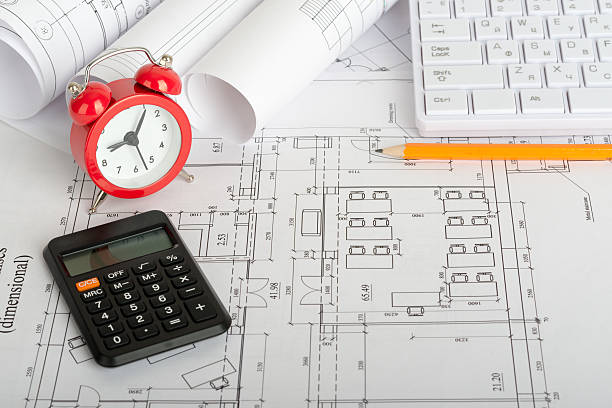Essential Tips for Accurate Quantity Takeoff in Construction Projects

In the world of construction, accurate planning is the foundation of any successful project. One critical component of that planning is the quantity takeoff in construction, which directly impacts project costs, timelines, and resource allocation. Quantity takeoff involves measuring and quantifying the materials and labor needed for a construction project, ensuring that everything is accounted for before work begins.
At High Q Estimation, we understand the importance of precision in quantity takeoff, which is why we’ve compiled essential tips to help professionals achieve the highest level of accuracy.
What is Quantity Takeoff in Construction?
Before diving into the tips, it’s important to understand what quantity takeoff in construction entails. Essentially, quantity takeoff refers to the detailed process of listing, measuring, and calculating the quantities of materials and labor required for a project. This includes materials like concrete, steel, drywall, and paint, as well as labor hours, equipment, and other resources.
A thorough and accurate quantity takeoff is essential because it lays the groundwork for creating a reliable estimate and project schedule. Without this, the risk of cost overruns, material shortages, or delays is significantly higher.
Tip 1: Use Detailed and Up-to-Date Construction Plans
One of the key factors in achieving an accurate quantity takeoff in construction is to work with the most detailed and up-to-date plans available. Construction drawings and plans provide the essential details about dimensions, materials, and specific requirements for each aspect of the project. Even minor changes in the design can have a major impact on the quantities of materials required.
At High Q Estimation, we always recommend working with the final, most up-to-date version of your project’s blueprints to avoid errors in your calculations.
Tip 2: Break Down the Project into Phases
Breaking a project into phases or sections can simplify the process of quantity takeoff in construction. This approach allows you to focus on specific elements, reducing the chance of overlooking important details. For example, a construction project might be divided into foundation work, framing, roofing, electrical, and interior finishes. By addressing each phase individually, you ensure that no part of the project is left out.
Breaking down the project also helps you tackle complex jobs with more confidence, ensuring that quantities are calculated for every part, from rebar in the foundation to the insulation in the walls.
Tip 3: Utilize Digital Takeoff Software
Gone are the days of relying solely on paper drawings and manual calculations. Today, digital tools have revolutionized the way quantity takeoff in construction is performed. Takeoff software allows professionals to quickly and accurately measure quantities, reducing human error and saving time.
At High Q Estimation, we utilize state-of-the-art takeoff software to improve accuracy and speed. These tools can generate detailed reports, track changes, and even integrate with estimation software for seamless cost analysis.

Construction Cost Estimation
High Q Estimation LLC Provides the most accurate estimates for All types of Commercial & Residential, Renovations & New construction Projects.

Quantity Takeoff
We offer break down the project into individual components (e.g., materials, labor, and equipment) and quantify each of them.

Project CPM Scheduling
We are providing Critical Path Method scheduling services to our respected clients for better understanding of their project’s timeline.

Bid Winning Plan
If you want to win a bid, you are at the right place. We guarantee our Bidding estimates helps you win bids. Hire us full time or for a single project to get most competitive numbers.
Tip 4: Double-Check Measurements and Calculations
While software tools can improve efficiency, it’s always important to double-check your work. Simple miscalculations or incorrect measurements can lead to costly mistakes. When performing a quantity takeoff in construction, make it a habit to double-check all measurements, conversions, and material specifications to ensure you’ve accounted for everything properly.
For instance, a mistake in measuring square footage or a miscalculation in the number of units required for materials like tiles or drywall could throw off your entire estimate.
Tip 5: Collaborate with Experienced Professionals
Collaboration is key to a successful quantity takeoff in construction. Working alongside experienced professionals like architects, engineers, and project managers ensures that all aspects of the project are considered. Their input can help refine the accuracy of the takeoff by providing deeper insights into material selection, labor requirements, and potential project challenges.
At High Q Estimation, our team of seasoned estimators collaborates with construction professionals to ensure that every estimate is backed by expert knowledge and practical experience.
Tip 6: Factor in Waste and Overages
Construction projects often generate waste, and it’s important to factor in overages when performing a quantity takeoff in construction. This means accounting for additional materials that may be required due to cutting waste, mistakes, or future repairs.
For instance, when calculating the amount of drywall needed for a project, adding a waste factor of 5-10% can help prevent shortages. By anticipating potential material overuse or waste, you ensure that the project runs smoothly without unexpected delays.
Tip 7: Review Historical Data from Similar Projects
Past project data can be an invaluable resource for improving the accuracy of your quantity takeoff in construction. Reviewing data from similar projects helps you understand typical material requirements, labor needs, and common pitfalls. Historical data also provides benchmarks for labor productivity, which can help fine-tune your labor cost estimates.
At High Q Estimation, we leverage historical data from hundreds of past projects to provide reliable quantity takeoff services. Our team reviews similar project data to ensure that every estimate is grounded in real-world results.
Tip 8: Stay Updated on Material Costs
Material costs can fluctuate, and failing to account for price changes can lead to inaccurate estimates. Regularly check the latest market prices for key materials such as concrete, steel, lumber, and electrical components. Keeping up with market trends ensures that your quantity takeoff in construction reflects the most current costs.
Conclusion
Performing an accurate quantity takeoff in construction is essential to the success of any project. From breaking down the project into phases to utilizing advanced software tools, the steps you take during the quantity takeoff process will directly influence your project’s outcome. By following these essential tips and working with experienced professionals like High Q Estimation, you can ensure that your projects stay on budget, on time, and free of costly mistakes.
